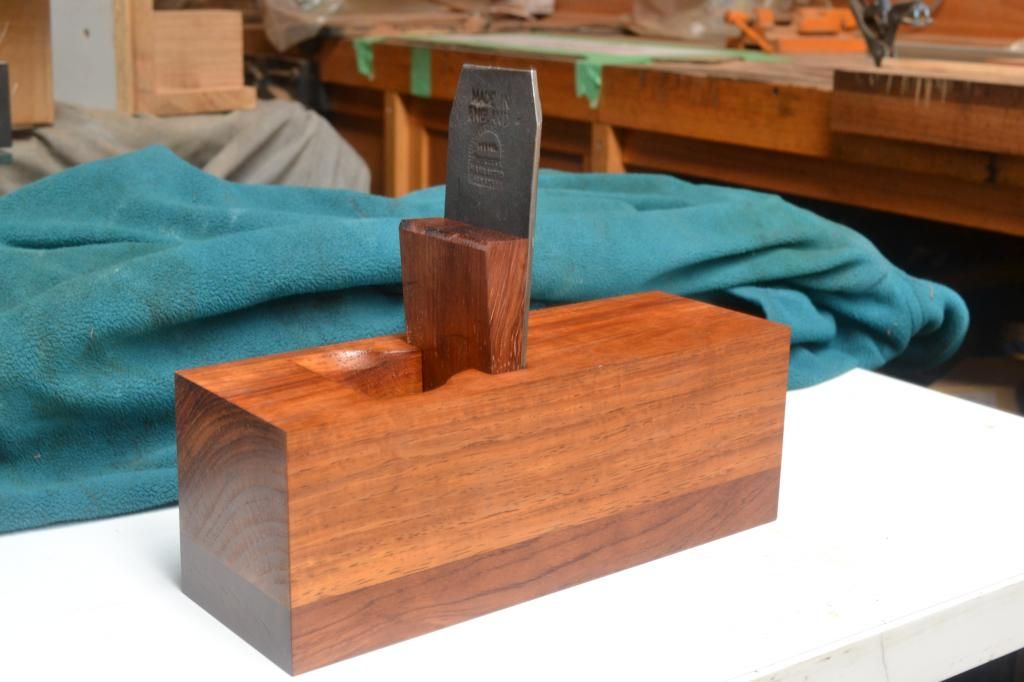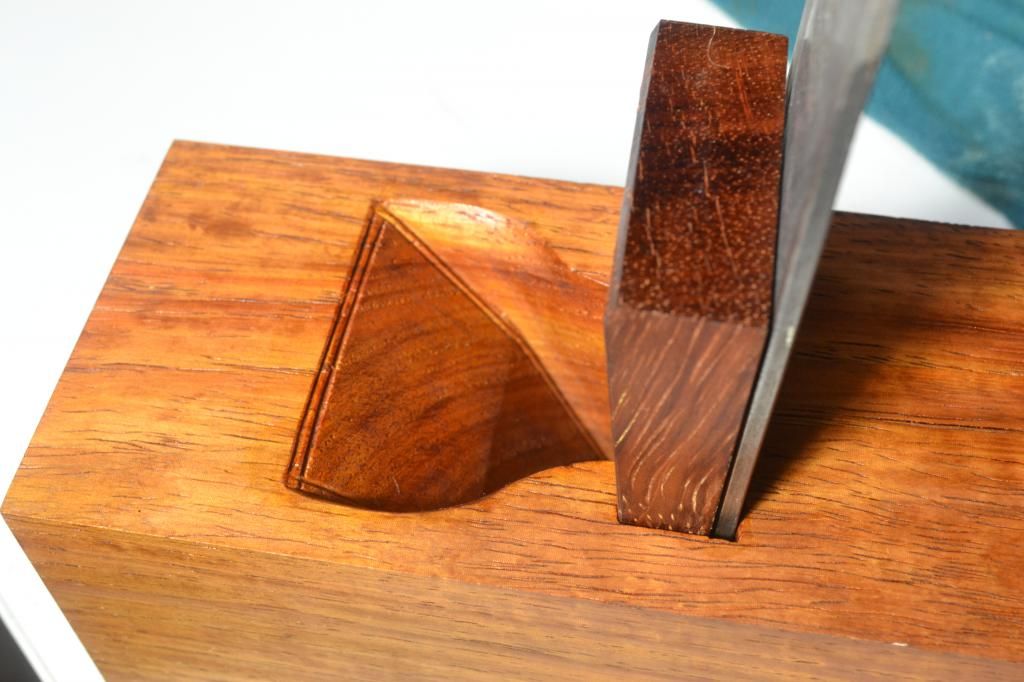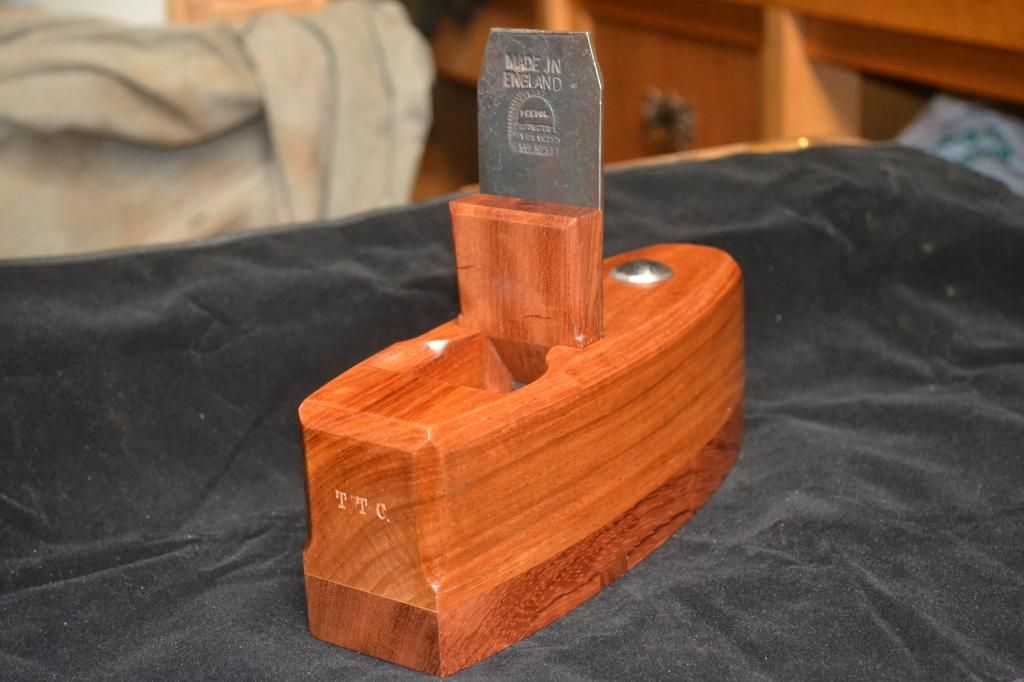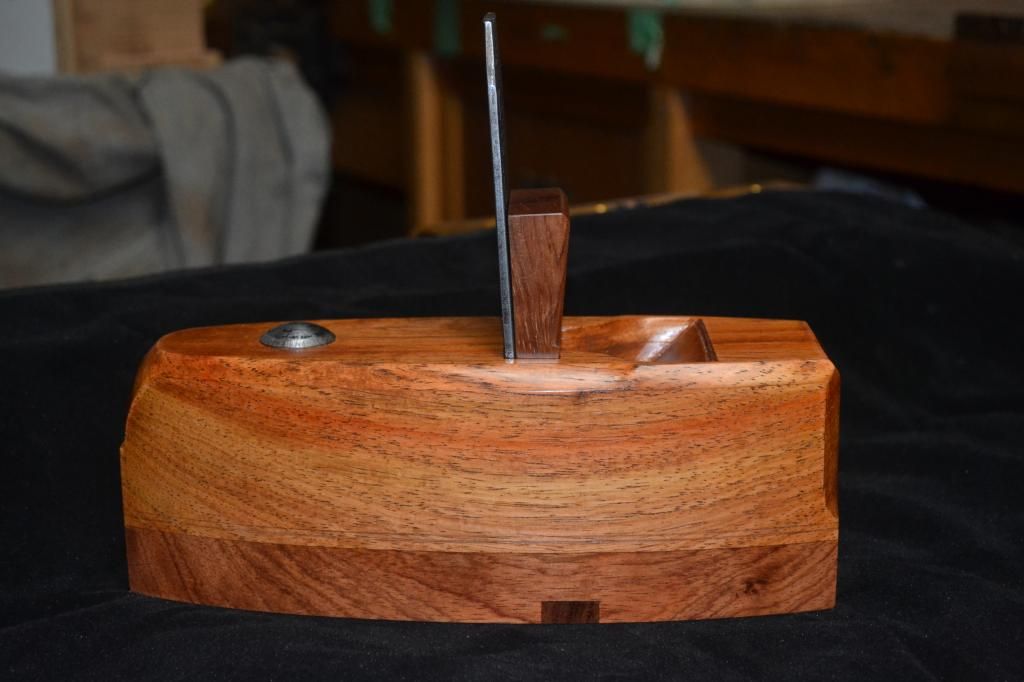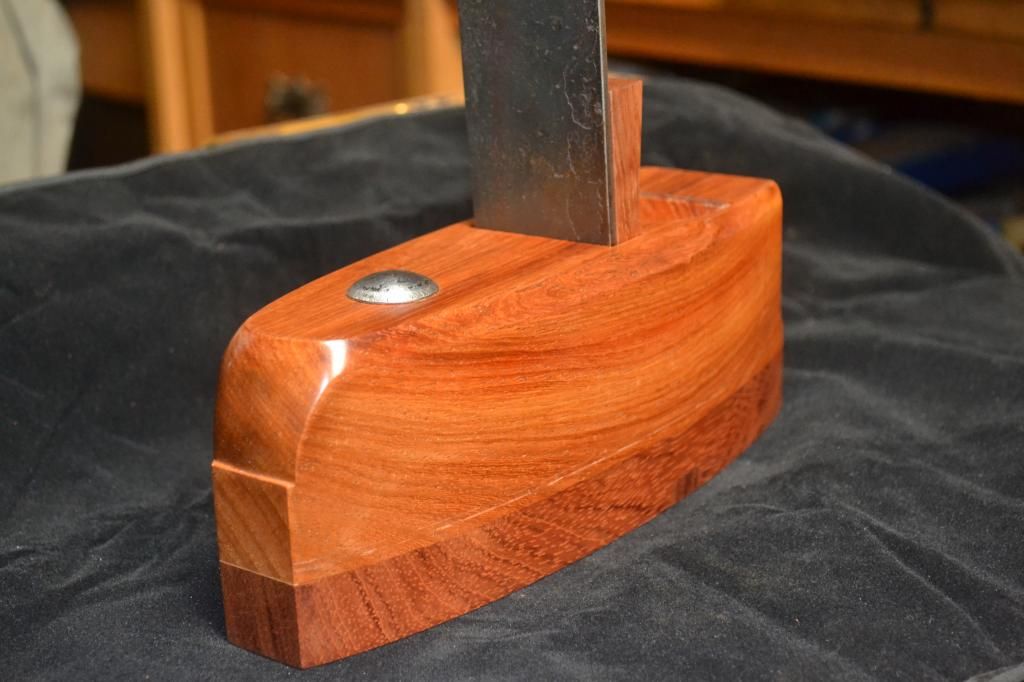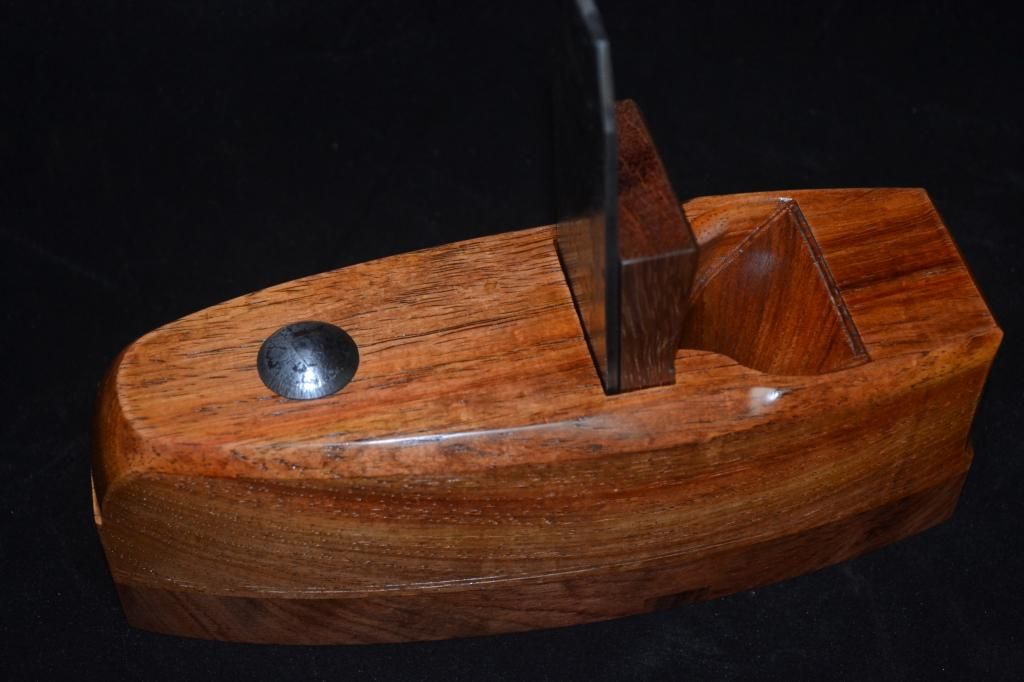swagman
Established Member
Hi all. I have started work on a new 9 inch coffin shaped toothing plane. I want to put a clear natural finish on this plane, so to add an extra highlight to its look I have added a Bubinga sole to the PNG Rosewood upper body. Its a visually pleasing match using 2 different wood species.
Both inside surfaces to be glued were worked with a toothing iron to maximise the bonding achieved with the Gorilla Glue adhesive.
I have no plans to make this post a long winded tutorial from start to finish so you can all rest easy.
The following photo's show the basic form of the plane body after its been marked out ready to be mortised.
Stewie;
Side view.
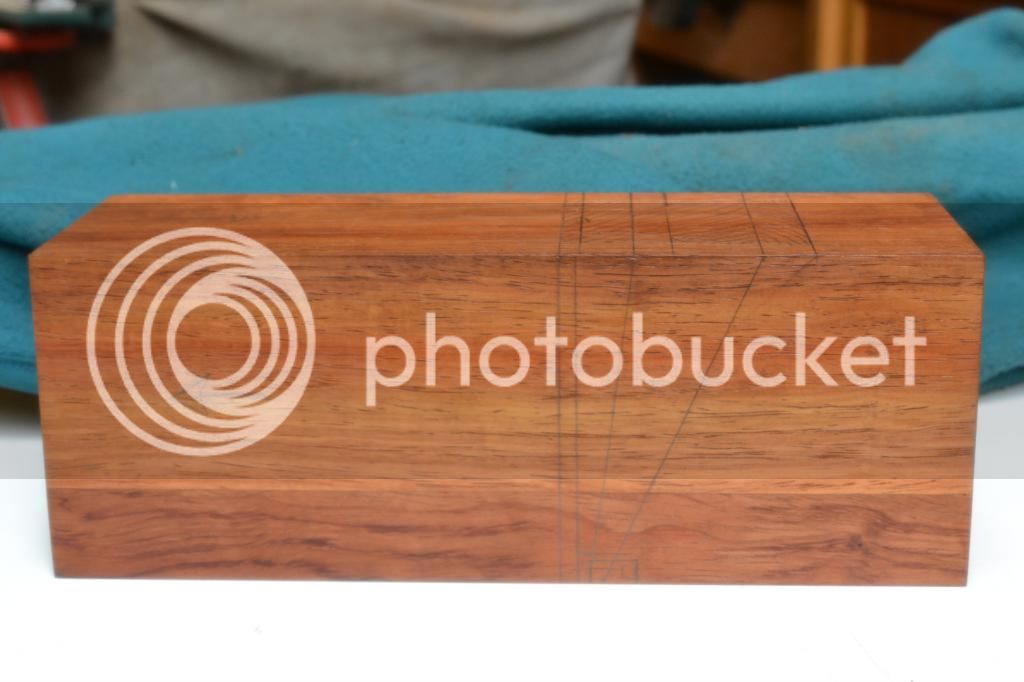
Top view.
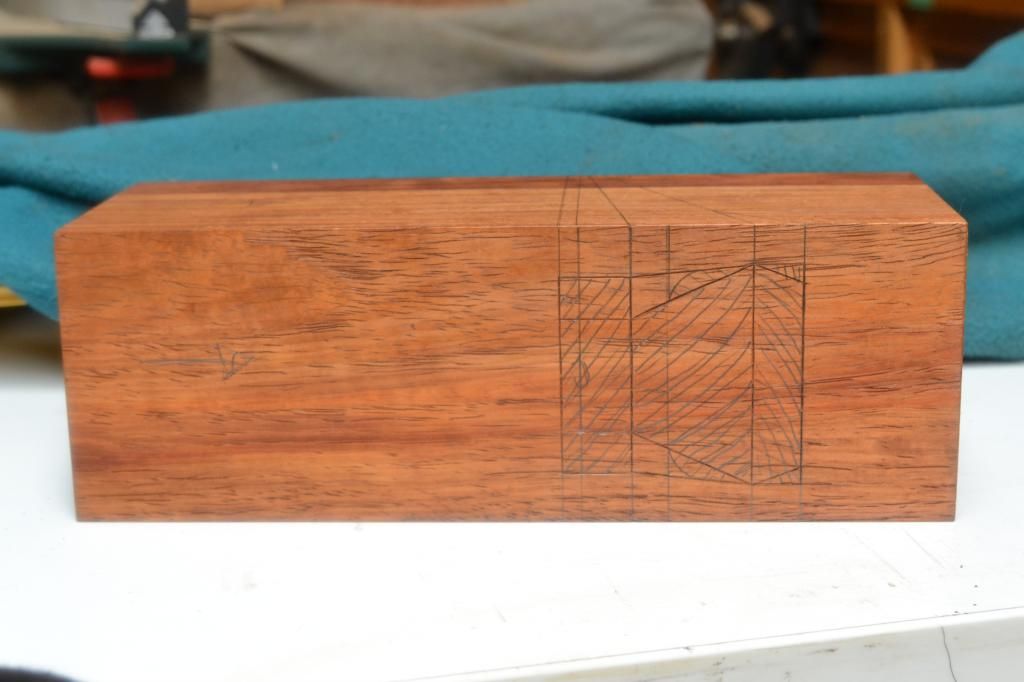
Bottom view with the guide holes drilled.
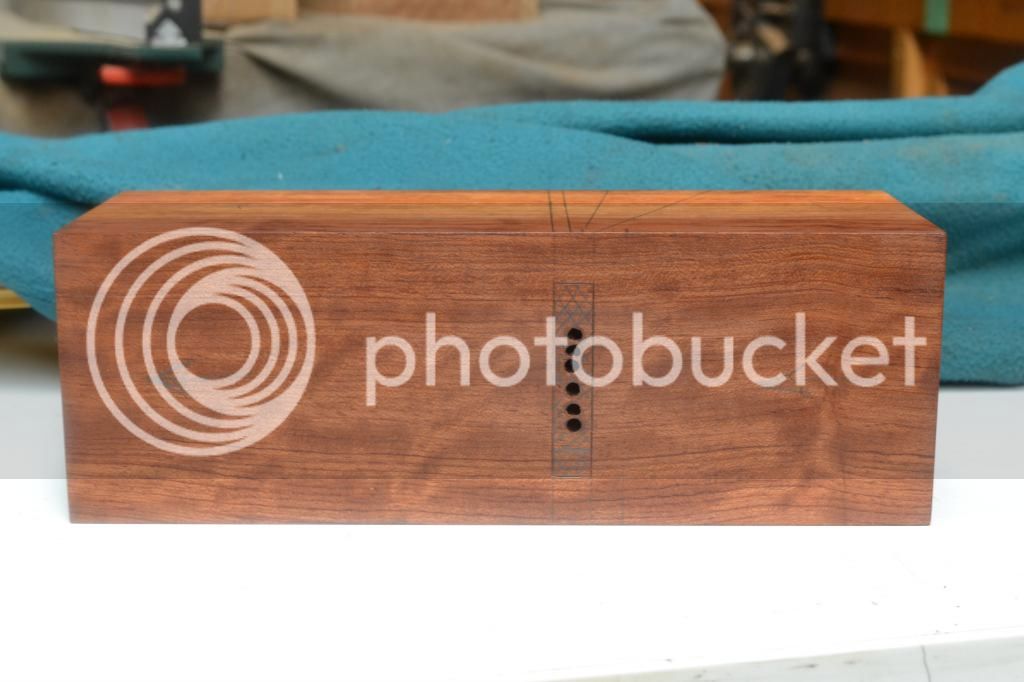
Front view showing a close up of the glued joint.
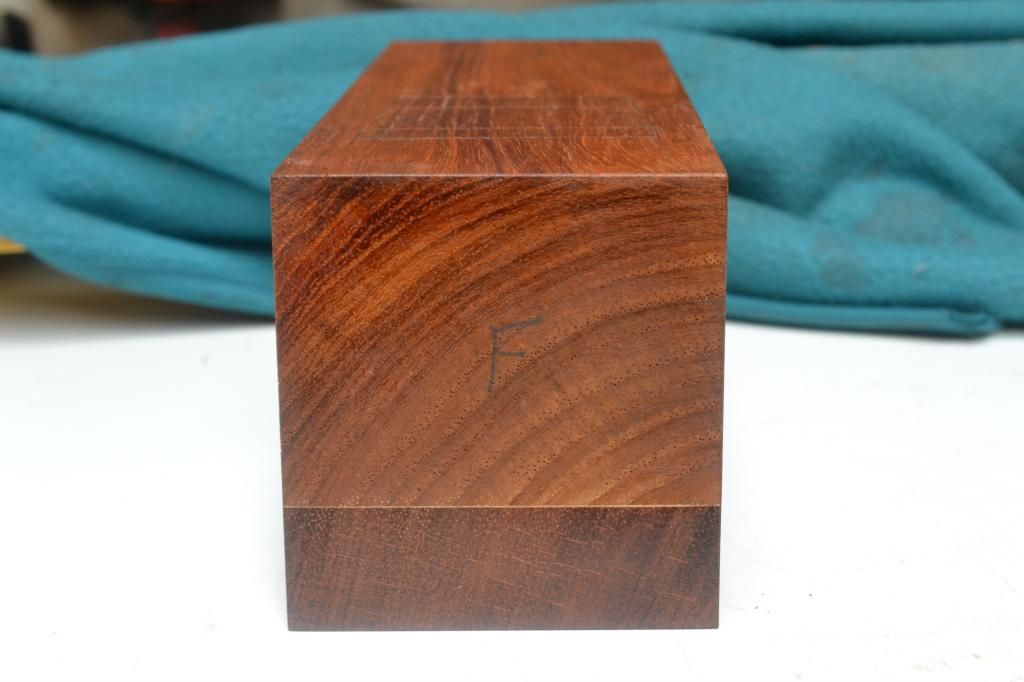
The plane body has been taped up to protect the 90 * corners of the plane body while its been held in the bench vise during mortising out.
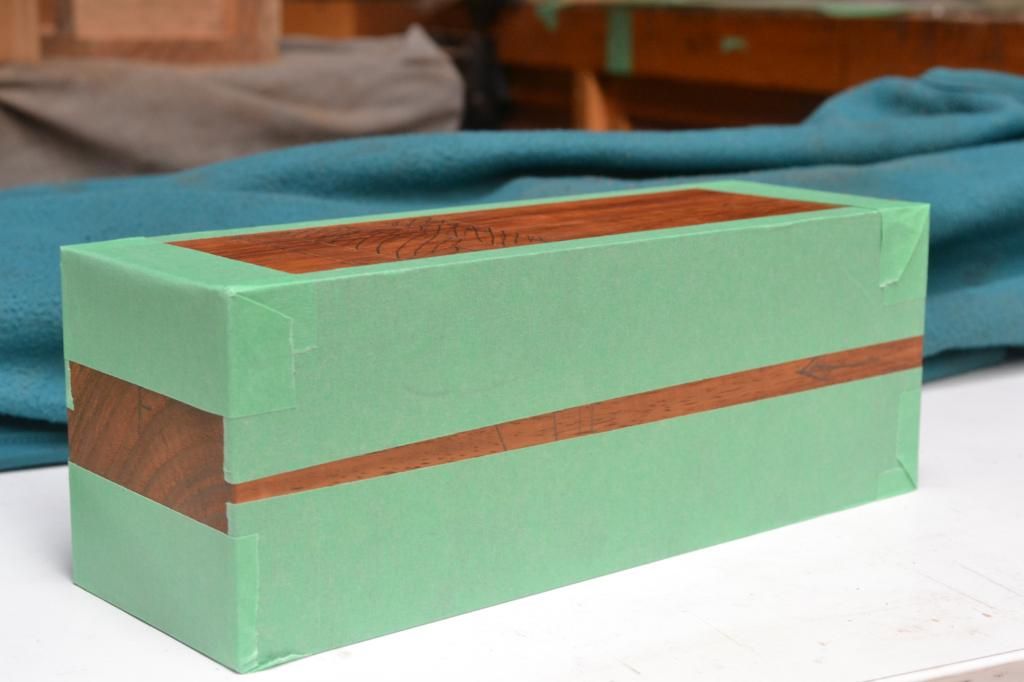
Both inside surfaces to be glued were worked with a toothing iron to maximise the bonding achieved with the Gorilla Glue adhesive.
I have no plans to make this post a long winded tutorial from start to finish so you can all rest easy.
The following photo's show the basic form of the plane body after its been marked out ready to be mortised.
Stewie;
Side view.

Top view.

Bottom view with the guide holes drilled.

Front view showing a close up of the glued joint.

The plane body has been taped up to protect the 90 * corners of the plane body while its been held in the bench vise during mortising out.



































